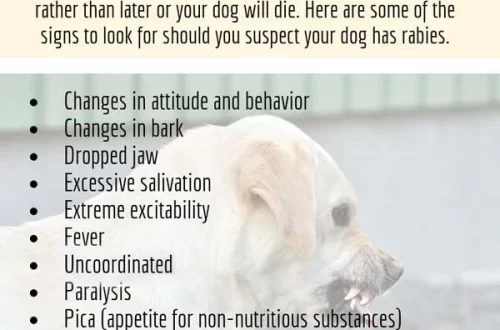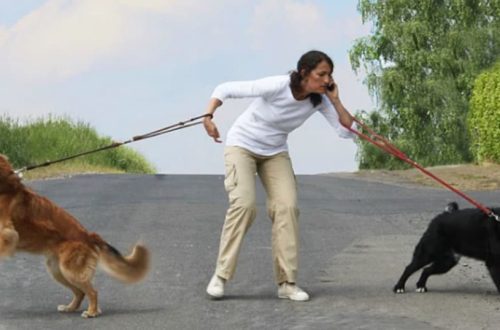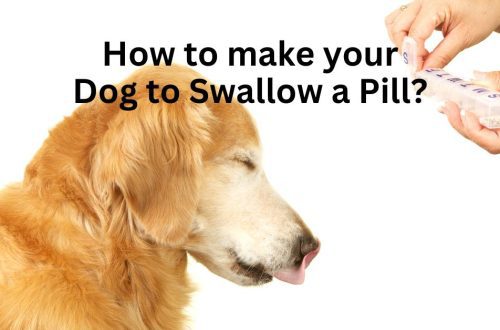
What to do if a dog has red eyes: causes, symptoms and treatment
Contents
Causes of red eyes in dogs
The causes of red eyes in a dog can be of a different nature: heredity, infectious and non-infectious diseases, injuries, and so on. In addition, redness can be local or extensive, be observed for a short period of time or for a long time, be accompanied by concomitant symptoms, or be the only sign of pathology.
Infectious diseases that cause redness of the eyes
This group of causes of red eyes includes contagious diseases caused by viruses, bacteria, fungus.
- Chlamydia. Often occurs in a chronic form. The eyes are affected alternately. If left untreated, uveitis can develop, eventually resulting in blindness.
- Viral diseases in puppies. Redness of the eyes is usually accompanied by diarrhea, vomiting, high body temperature and loss of large amounts of fluid from the body.
- Toxoplasmosis. Delayed assistance leads to the development of uveitis, just as with chlamydia. Newborn dogs usually do not survive, and infected pregnant females often have spontaneous abortions.
- Telaziosis. This is a parasitic disease; thelazii are spread by flies. Feeding on the eye secretions of the dog, the flies bring the larvae onto the mucous membrane. Redness of the eyes is accompanied by clouding, inflammation of the eyelids, conjunctiva, loss of vision.
- Conjunctivitis. This is an inflammatory process in the connective membrane of the dog’s eye, which occurs for a variety of reasons. Viral or bacterial conjunctivitis is contagious to other animals and humans. Depending on the nature of the disease, redness of the eyes is accompanied by various accompanying symptoms.
- Keratitis. With this disease, the cornea becomes inflamed. As in the previous case, the pathology has a different nature. In addition to red eyes, the dog has: increased secretion of lacrimal secretion, thickening of the eyelids, deposition of calcium salts, and the formation of pus in the organs of vision is possible.
- Plague. The dog’s eyes turn red at the same time as the lungs are affected. In parallel, the lymph nodes increase, vomiting and diarrhea appear, the body temperature rises, and the eyes fester. The disease can lead to the death of a pet.
Non-infectious pathologies
Red eyes in a dog can be the result of non-contagious diseases and conditions.
- mechanical injury. Can be obtained during a fight with another dog or cat; a dog can accidentally damage his eyes with a branch; seeds or other small objects can get into the organs of vision.
- Inversion and eversion of the eyelids. In the first case, the hairs located on the eyelid irritate the cornea of the eye, which over time can lead to poor vision and blindness. In the second, the mucous membrane prolapses outward, which provokes the penetration of infectious agents into it. Pathology is often genetically determined and is observed, for example, in bulldogs, sharpei.
- Blepharitis. Depending on the provoking factor (trauma, parasites, etc.), the disease may or may not be contagious. In addition to the fact that the dog has red eyes, they fester, watery, stick together.
- Prolapse (prolapse) of the third eyelid. This is a pathological condition in which the nictitating membrane (third eyelid containing the lacrimal gland) covers part of the dog’s eye as a pinkish or red film. It prevents the eyes from closing, causes itching, reddening of the protein, provokes the penetration of infections and the development of inflammation. Most often transmitted genetically.
- Diabetes. Dogs with diabetes can have red eyes due to spikes in blood glucose. In this case, the blood vessels become thinner, damaged – they rupture and hemorrhage. Associated symptoms: dull coat, dry mucous membranes (including the eyes), rapid heartbeat, the animal drinks a lot.
- Blockage of the tear duct. Leads to the appearance of red eyes and frequent inflammatory processes.
- High blood pressure. Causes overflow of the blood vessels of the dog’s eyes with blood and their redness. Over time, it can cause visual impairment or loss.
- Malignant and benign formations. Various tumors (bumps) can also cause red eyes, having a mechanical, hormonal or other effect on the organs of vision. In older dogs, an adenoma of the third eyelid is often formed.
- Allergic reaction. Red eyes are accompanied by itching of varying intensity, swelling of the mucous membrane, copious secretion of lacrimal secretions, and sneezing. Any irritant can act as an allergen – pollen, drugs, ingredients of feed mixtures, hygiene products.
Red eyes as heredity
In some cases, red eyes in a dog are normal. This occurs if the pet is an albino or belongs to one of the breeds genetically predisposed to redness of the proteins of the organs of vision. These include the Bulldog, Cocker Spaniel, Pekingese, Pug, Basset Hound and others. In this case, not the redness itself is inherited, but the diseases in which this occurs, for example, inflammation of the conjunctiva.
Redness of the eyes as a normal response of the body to stress
In a number of situations, red eyes in a dog become under the influence of some kind of stress factor. For example, with excitement (moving, fear, aggression), the vessels of the eyes can expand, which visually manifests itself as redness. As the pet calms down, the phenomenon disappears on its own.
The same is observed with prolonged exposure to the sun or in an excessively heated stuffy room. Blood rushes to the eyes, shortness of breath appears, the dog loses coordination and is poorly oriented in space, may lose consciousness, vomiting and/or bleeding from the nasal passages is possible. In such cases, the pet needs urgent help: it is necessary to give him water, pour it on top, put a wet cloth (ice) on his head, place him in a cool, well-ventilated place.
Sometimes red eyes in a dog are observed after a walk, if there is a strong wind outside, especially with dust. When small particles get on the membrane of the organs of vision, irritation of the mucous membrane occurs, its dryness, which leads to redness.
Concomitant symptoms
What symptoms should I look out for if my dog has red eyes? In order for the diagnosis to be as accurate as possible, before visiting the veterinarian, the owner needs to carefully look at his four-legged friend. Be sure to inform the specialist about the following accompanying symptoms:
- difficulty opening the eyes, sticking together of the eyelids;
- purulent or other discharge;
- profuse lacrimation;
- itching (the dog often rubs the organs of vision);
- disproportionate pupils;
- fear of the light;
- the appearance of spots, turbidity, neoplasms on the cornea, iris, eyelids;
- swollen eyelids;
- elevated body temperature.
You should also pay attention to the general condition of the animal: is it hiding in a secluded place, is it scared or has it become aggressive and irritable, is it weakened, is there discharge from the nostrils or breathing difficulties, and so on. Even an insignificant, at first glance, clarification or detail will make it possible to undergo the necessary examination, make the correct diagnosis and quickly begin treatment.
Methods of diagnosis
Depending on the alleged diagnosis, which is based on data provided by the owner, the veterinarian will prescribe diagnostic measures. These can be: tests for the condition of the cornea or tear duct, measurement of intraocular pressure, microscopic, histological or bacterial analysis of secretions, taking material for biopsy and other diagnostic methods.
How to treat redness of the dog’s eyes
In most cases, the treatment of red eyes in a dog is carried out with the help of external agents – ointments, drops and solutions for washing. In difficult situations (depending on the disease), injections are prescribed. In therapy, drugs of different groups can be used: antibacterial, antiviral, anti-inflammatory, antifungal, antiseptic, regenerative, immunostimulating and others. In parallel, vitamin-mineral complexes, physiotherapy measures can be prescribed.
The most popular external means are:
- Anandin – reduces inflammation, has an antiseptic effect, heals tissues;
- Sulfacyl sodium – antibacterial effect;
- Leopard – exhibits a powerful antiseptic effect, eliminates pain, prevents the development of a secondary infection, contains an antibiotic, can also be used for prevention;
- Diamond eyes – antimicrobial drops, stimulate the healing of damaged tissues, eliminate inflammation;
- Maksidin – has immunostimulating activity;
- Iris – healing, anti-inflammatory, antibacterial agent, especially effective for ulcerative lesions of the cornea;
- Sofradex – narrows blood vessels, eliminates the inflammatory process, destroys the infection;
- Tsiprovet – has a pronounced antibacterial effect;
- Tetracycline ointment – antibacterial, anti-inflammatory drug, effective against chlamydia;
- Furacilin is an antiseptic used to wash the eyes.
Features of the treatment of red eyes in a dog for some diseases and conditions are described in the table below.
Disease/condition
How is the treatment
Toxoplasmosis
Anandin (Maxidin) is instilled into the pet’s eyes. In parallel, immunomodulatory injections are prescribed.
Telaziosis
To destroy the calves, once every 25 days during the entire summer period, a large amount of 3% boric acid is instilled into the eyes of the animal.
Conjunctivitis
Bars is used in the form of drops.
Inversion (Eversion) eyelid
Conservative treatment consists in the use of hormonal ointments, such as hydrocortisone. Or perform surgery.
The presence of a foreign body
Extraction is made, after which the eye is washed with an antiseptic, an ointment is applied.
Prolapse of the third eyelid
Treatment consists in removing the pathology surgically. Since the lacrimal gland is also removed at the same time, drops are shown to the animal for the rest of its life to moisten the mucous membrane of the eyes.
Is it possible to use folk remedies
It is unlikely that a dog will be able to cure redness of the eyes of a dog with folk remedies alone, especially when it comes to redness as a symptom of diseases. You can use folk methods, for example, to wash the eyes, soften the crusts on the eyelids before instillation or laying the ointment. For this, it is recommended to use decoctions and infusions of chamomile, green and weak black tea.
How to provide first aid
Before visiting the veterinarian, you can alleviate the condition of the pet on your own. First aid measures are as follows:
- in the presence of pus or other secretions, if household chemicals get into the eyes, rinse them well with warm water;
- if the mucous membrane of the organs of vision is dry, it is necessary to drip a means to moisturize it, for example, Natural tear;
- if there is a very strong redness, you can use the Ciprovet remedy.
You cannot use any drugs based on antibacterial, antifungal, hormonal and other active ingredients on your own! Such a “treatment” can provoke complications and lead to loss of vision.
What to pay attention to during the treatment
For a speedy recovery of a four-legged friend and in order to avoid complications, experts recommend the following:
- before the dog is examined by a veterinarian, the eyes can only be washed with water, weak tea, furacilin solution;
- a visit to a specialist is necessary, even if there are no associated symptoms;
- do not try to “examine” the pathology on your own, as there is a risk of introducing a secondary infection or getting infected from a pet;
- rinse with rubber gloves, after the procedure, wash your hands thoroughly with soap and water.
The sooner the animal is examined by a doctor, the more likely it is to avoid complications and maintain vision.
How to wash your dog’s eyes
To wash the eyes of a dog, you need to moisten a disc of cotton wool or a piece of gauze (soft tissue) in a pre-prepared solution or ordinary boiled water. The solution should be at room temperature. Movements are made in the direction from the outer corner of the eye to the bridge of the nose. If there are dried crusts on the eyelids, a richly moistened disk is applied to them several times, holding for 2-4 seconds. You need to apply a compress until the crusts get wet, after which they are carefully removed with a new, wetted and wrung out disk.
preventive measures
To prevent red eyes in a dog, you need to pay attention to the following points:
- increase the immunity of the pet, provide a balanced diet;
- walk in a safe place;
- prevent unnecessary “acquaintances”;
- avoid stress;
- carefully select hygiene products;
- destroy parasites in a timely manner;
- get vaccinated on time;
- promptly contact a veterinarian, without delaying the treatment of diseases.
Periodic examination of the dog’s eyes, attention to it, its behavior and mood, as well as a quick response to changes in well-being will serve as the key to a long and healthy life of the pet.





